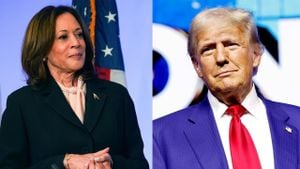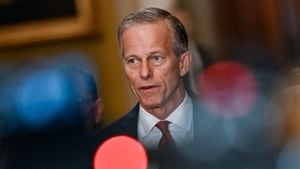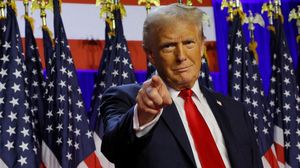Public education reform has become the centerpiece of debate across Montana, igniting passionate discussions among parents, educators, and policymakers. At the core of this debate is the concept of school choice, characterized by the idea of allowing parents to select the best educational setting for their children, which some believe leads to improved educational outcomes. Critics, meanwhile, argue this approach undermines traditional public schooling and could widen the gap between students of differing socioeconomic backgrounds.
The efficacy of school choice policies is being closely examined. Advocates tout the potential for increased competition among schools, which could drive innovation and improve quality through parental engagement and demand for results. Proponents assert this could particularly benefit students trapped in underperforming schools. "Giving parents the choice to direct their children's education is imperative for success?" argues Mary Sheehy Moe, an advocate for educational reform. She believes these choices expand opportunities and lead to stronger educational alternatives.
On the flip side, opponents of school choice warn of the pitfalls it may create. They express concerns about the potential divestment of resources from public schools, which could exacerbate existing inequalities. "The first fallacy of 'school choice' is the misleading idea it creates equal opportunity when it often fails to address systemic issues within education funding and access," Sheehy Moe counters, emphasizing the need for reforms to address the root causes rather than masking them with options.
Montana’s educational structure is currently facing significant strain. Many local schools, especially those serving lower-income areas, struggle with funding and resources, which can impact student performance. The shifts proposed by school choice advocates might benefit some students but potentially leave others behind, indicating the complexity of this issue.
The dialogue around public education reform isn't just about what schools look like; it embodies broader discussions about equity, access, and community values. There’s also the question of accountability: if parents can choose where to send their children, who is responsible for ensuring the quality of those new educational environments?
This debate has gained urgency as the political and social landscapes evolve. While some celebrate diverse educational paths, others call for ensuring all schools achieve high standards. "This should not be just about choice; it should be about quality and access for every child," Sheehy Moe states, highlighting the sentiment echoed by many educators advocating for comprehensive reform rather than piecemeal solutions.
Revisions to the educational funding model may also be on the table. Traditionally reliant on property taxes, the current funding mechanism often underfunds schools serving low-income areas. A re-examination of how resources are allocated could lead to broader and more equitable educational opportunities across the board. This is particularly pertinent as discussion surrounding educational equity continues to evolve, with activists demanding more than just political rhetoric—they want actionable change.
Local school boards and state officials are engaging with these themes as they try to balance options for parents with ensuring all children receive a quality public education. The recent push for school choice adds another layer of complexity, one where advancing opportunities for some may mean diminishing resources for others.
With the new academic year approaching, town hall meetings and discussions are ramping up, as concerned parents and educators seek clarity on what potential reforms might mean. Education committees across Montana are drafting plans and discussing legislation aimed at addressing these issues. The outcomes of these discussions will likely shape the educational environment for countless Montana children.
At the crux of this debate remains the pivotal question: How can the state improve education for all students, ensuring high standards and equity, without leaning too heavily toward divisive school choice policies? This is the fundamental challenge facing Montana as it stands at the crossroads of public education reform. Finding this balance will require thoughtful dialogue, strong leadership, and dedicated advocacy to serve the best interests of every child.



